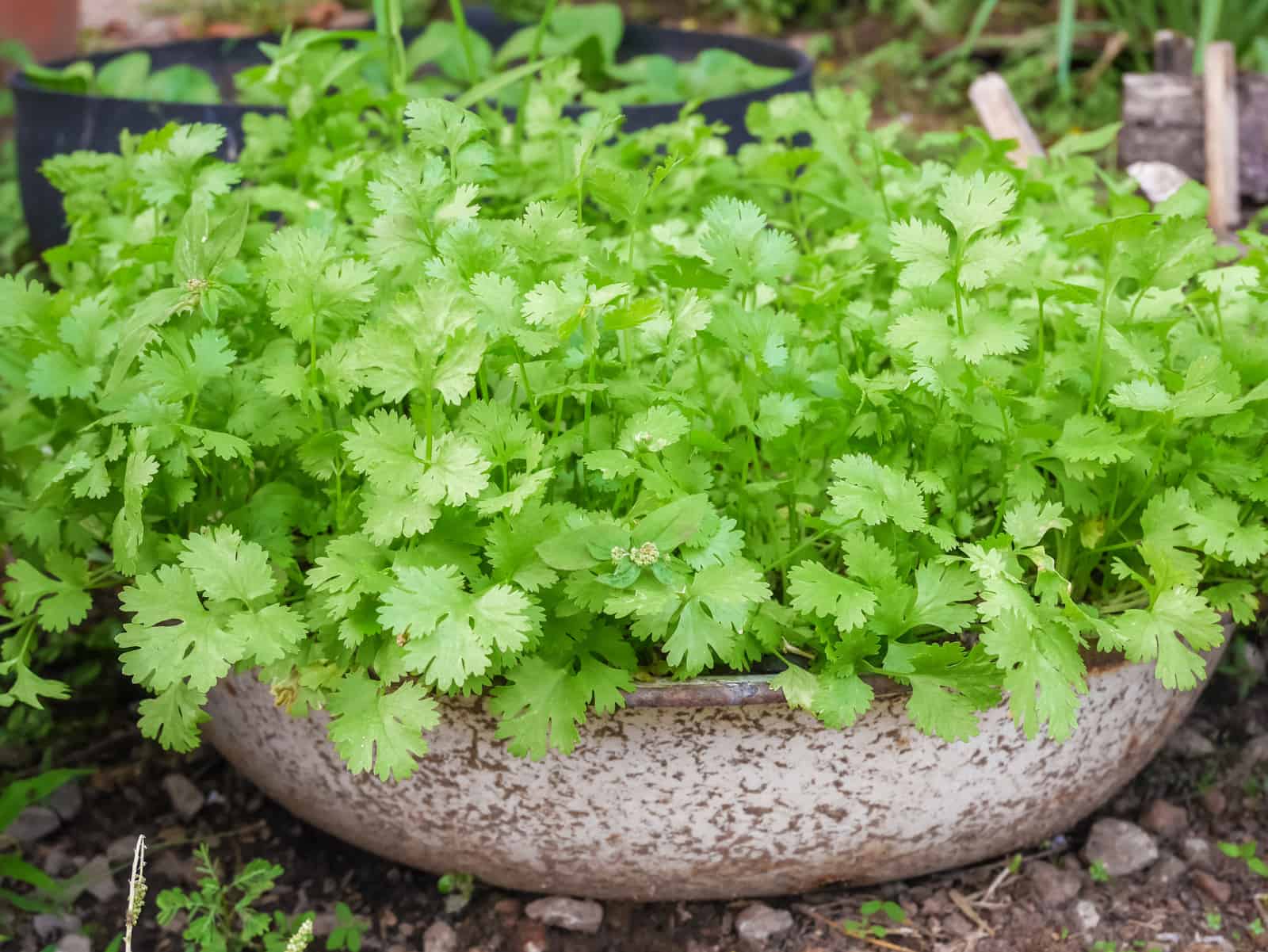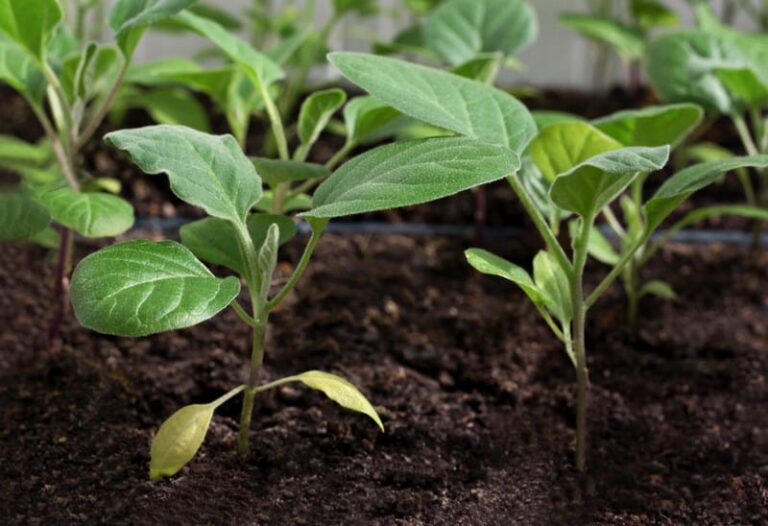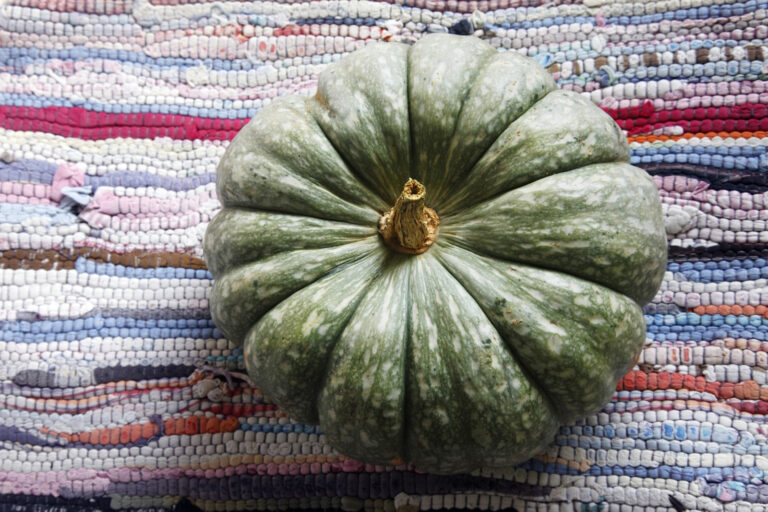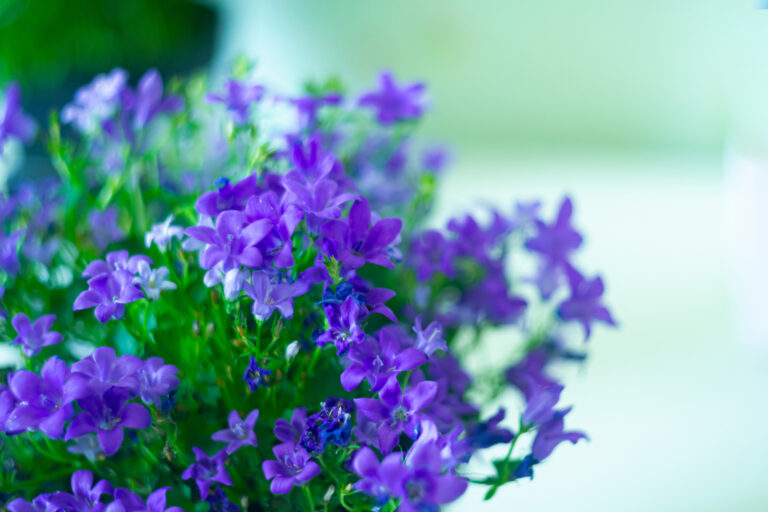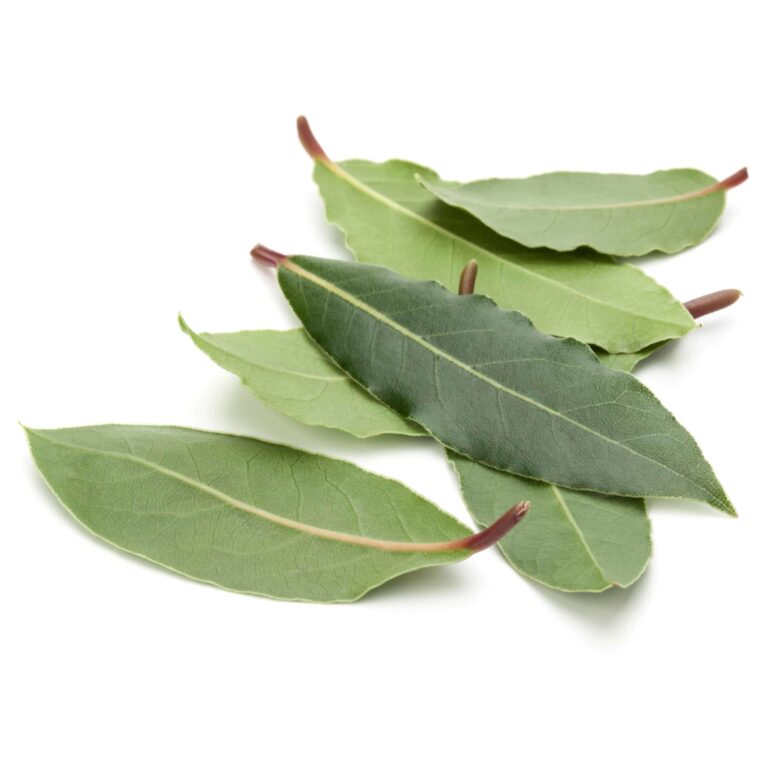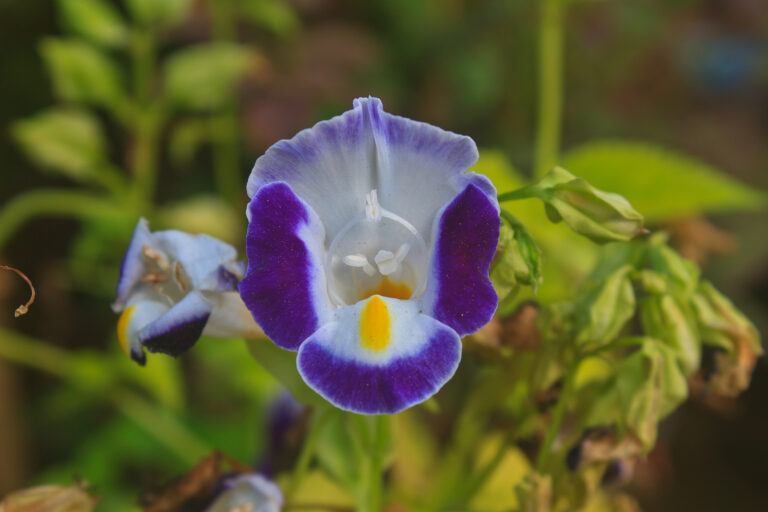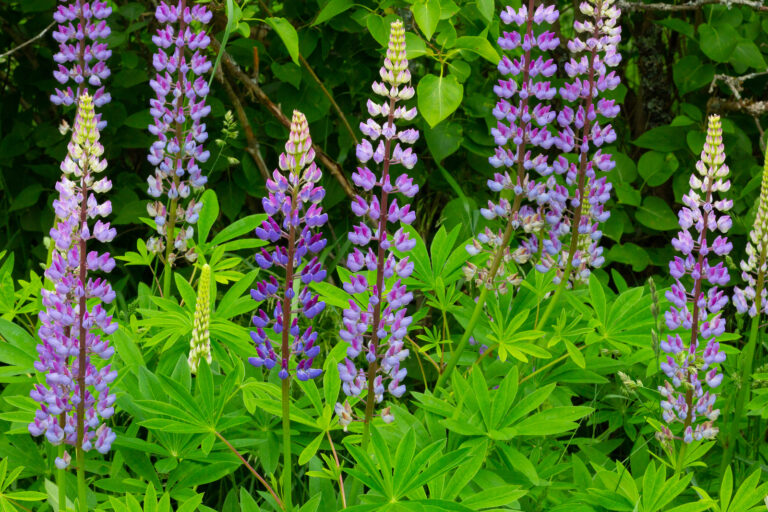Cilantro Planting, Growing, and Harvesting Guide
The herb leaf called cilantro and the herb seed called coriander grow on the same plant. Cilantro is also known as Chinese parsley. Both cilantro and coriander come from the plant Coriandrum sativum. In the United States, cilantro is the name for the plant’s leaves and stem; coriander is the name for its dried seeds. Internationally, the leaves and stems are called coriander, while their dried seeds are called coriander seeds.
Cilantro-coriander is a warm-weather annual. Sow cilantro in the garden in spring two to three weeks after the last expected frost date.
Parsley-like cilantro leaves can be snipped for fresh use as soon as the plant is 6 to 8 inches tall; the round-ribbed coriander seed will be ready for harvest about 100 days after sowing.
Here is your complete guide to growing cilantro.
Where to plant cilantro
- Best location: Plant cilantro in full sun; it will tolerate light shade.
- Soil preparation: Cilantro grows best in well-drained but moisture-retentive soil rich in organic matter. Prepare planting beds in advance with aged compost. Cilantro prefers a soil pH of 6.0 to 6.7.

When to plant cilantro
- Seed starting indoors: Cilantro grows a taproot and is best sown in place outdoors. If you start seed indoors be careful not to disturb the taproot at transplanting time. Start seeds in individual pots about the time of the last spring frost for transplanting out in about four weeks. Seeds germinate in 10 to 14 days.
- Seed starting outdoors: Sow seed in the garden in spring about 2 to 3 weeks after the last frost. Time late plantings so that harvest comes before the first hard frost. Cilantro will die back in freezing weather. Succession plant cilantro every two weeks for a continuous supply of leaves.
- Transplanting to the garden: Set out transplants two to three weeks after the last spring frost.
- Outdoor planting time: Direct sow cilantro outdoors after danger of frost is passed then plant every two to three weeks for a steady supply of leaves. Thin plants when they are three inches tall for permanent spacing.
How to plant cilantro
- Planting depth: Sow cilantro seed ¼ to ½ inch deep.
- Spacing: Thin successful seedlings from 8 to 12 inches apart. Space rows 12 to 15 inches apart.
- How much to plant: Grow 12 cilantro plants over the course of the season for cooking and culinary use; plant successive crops every two weeks for a continuous supply of cilantro leaves. Grow 20 plants for preservation.
Cilantro companions plants
- Companion planting: Plant cilantro with anise, garlic, chives, eggplant, potatoes, tomatoes, and salad burnet; but not fennel. Cilantro enhances the growth of anise. Cilantro’s blooms attract beneficial insects to the garden including parasitic wasps; the pungent smell of cilantro is said to deter aphids from nearby plants.
- Winter growing: Grow cilantro indoors in winter in a bright window or under fluorescent lights.
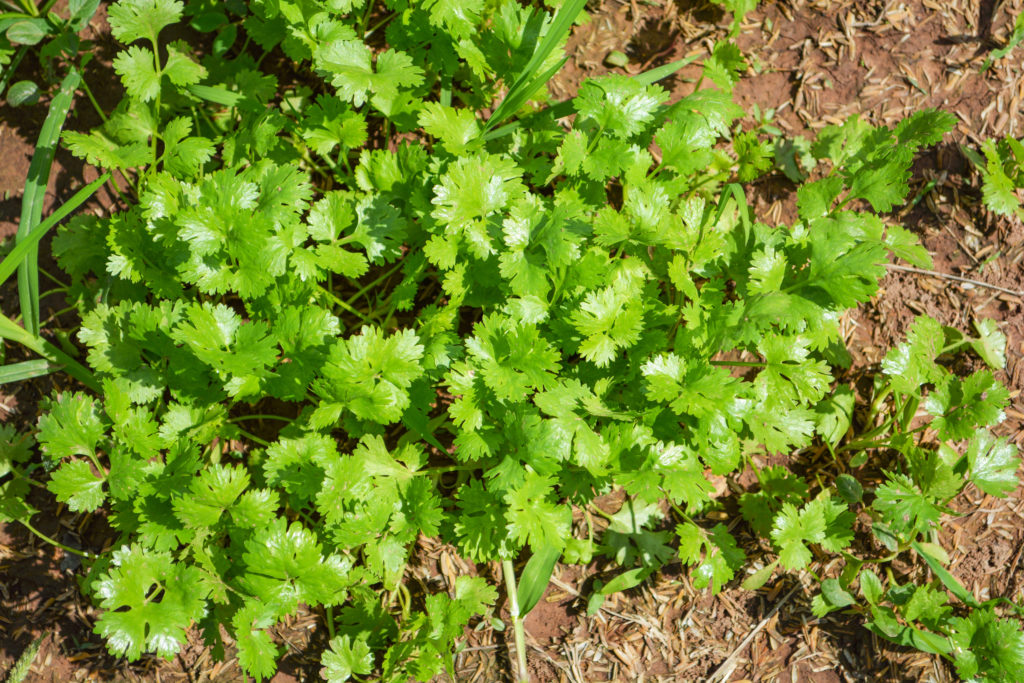
Watering and feeding cilantro
- Watering: Keep the soil evenly moist throughout the growing season. Do not let cilantro dry out. Avoid overhead watering as plants reach maturity; overhead water or rain can reduce seed yield.
- Feeding: Add aged compost to the planting bed in advance of planting cilantro. Do not fertilize at midseason. Avoid too much nitrogen or plants will sprawl.
Cilantro care and maintenance
- Care: Keep planting beds weed-free to reduce competition for nutrients and light. Tall stems may require staking. Pinching off flowers will slow bolting.
Growing cilantro in containers
- Container growing: Cilantro can be container grown as an annual in summer or indoors in winter. Choose a container at least 12 inches deep. Cilantro produces a taproot.
- Winter growing: In cold-winter regions, over-winter cilantro in an unheated garage or covered patio.
Cilantro pests and diseases
- Pests: Nematodes can attack cilantro roots. Repel nematodes by planting marigolds nearby.
- Diseases: Anthracnose and leaf spot can attack cilantro. Spray foliage with compost tea, a natural fungicide—and foliar fertilizer.
How to harvest cilantro and coriander
- When to harvest: Cilantro leaves can be harvested at any time after the plant is 6 to 8 inches tall. Plants mature 60 to 75 days after sowing. To harvest coriander seed, the plant requires 100 or more days.
- How to harvest: Snip cilantro leaves for fresh use after the plant is 6 inches tall or more. Small immature leaves have the best flavor. Pick just the top 2 to 3 inches to ensure continuous growth. Snip off the tops of stems before the plant flowers for a continued harvest of leaves. Continue picking leaves until the plant flowers.
- Seeds: Coriander seeds are harvested after cilantro flowers; the seed will be ready for harvest 2 to 3 weeks after flowering when they turn light brown. Hang stems and seed heads upside down in a paper bag in a cool, dry place. The seeds will fall into the bag as they ripen. Seeds are small, only about ⅛ inch in diameter. The ripe seed will smell spicy.
Cilantro and coriander in the kitchen
- Flavor and aroma: Cilantro leaves have a strong flavor that combines sage and lemon; the seed taste of citrus.
- Leaves: Cilantro leaves are often used in Mexican and also Southeast Asia cooking. Mince leaves and add them to food or use them whole as a garnish. Chop fresh leaves and serve them with tomatoes, green onions, and minced garlic. Add minced leaves to sandwiches for zippy flavor. Add leaves just before serving.
- Seeds: Use coriander seeds on home-baked bread and to flavor beets, onions, sausage, clams, and potatoes. Add seeds whole or ground to marinades, salad dressings, cheese, eggs, and chili sauce. Toast seeds before adding to dishes. Dried seeds taste of citrus; they can be chewed to relieve an upset stomach.
- Roots: Cilantro roots taste like leaves with an added nutty flavor. Add fresh minced roots to salads and relishes. The cilantro-coriander root is often used in Thai cooking.
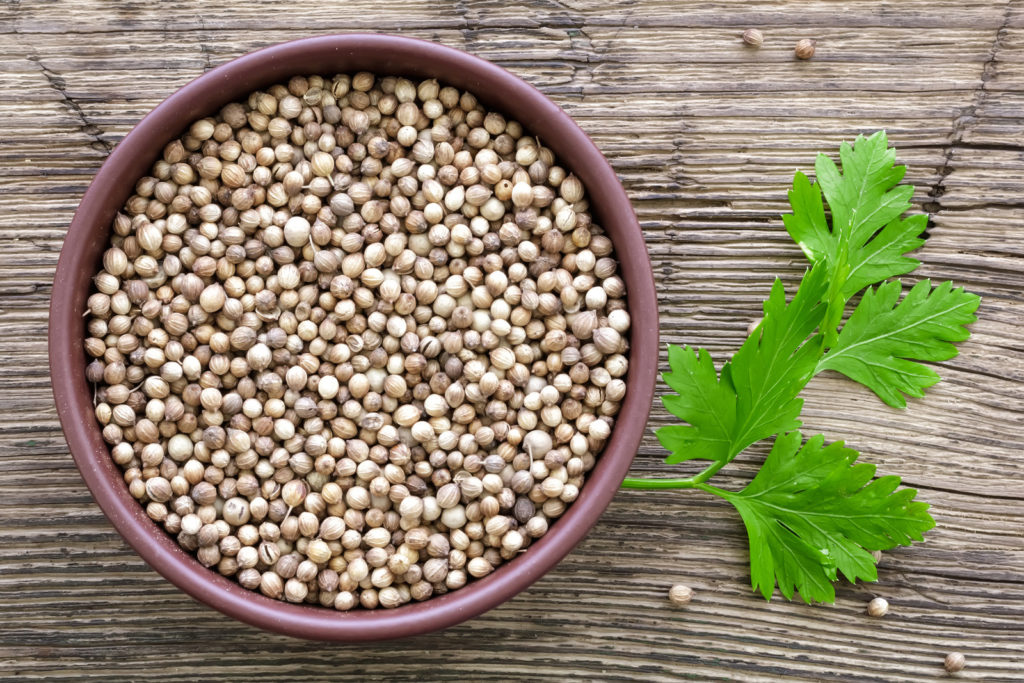
Preserving and storing cilantro and coriander
- Refrigeration: Fresh cilantro leaves can be kept in the refrigerator for up to a week; place the stems in water and put a plastic bag over the leaves to retain the aroma. Leaves lose their flavor and aroma when dried or frozen; so used them fresh.
- Drying: Dry coriander seeds thoroughly before using. The aroma of coriander seeds changes from unpleasant to savory as it dries. Seeds are usually scalded in hot water to protect them from insects, but hot water-treated seeds cannot be planted later. Cilantro leaves can be dried on a screen in a dark, cool, well-ventilated place.
- Freezing: The flavor of cilantro leaves disappears when dried or frozen.
- Storing: Cilantro leaves are best used fresh but can be dried and stored in an airtight container. To preserve leaves, make cilantro butter, oil, or vinegar (use white wine vinegar). Dried seeds can be stored for several months in an airtight container. Scald seeds before you store them to protect against insect damage in storage.
Cilantro propagation
- Seed: Cilantro is propagated by seed sown in mid-spring, late summer, or early fall.
Cilantro varieties to grow
- Some seed growers designate coriander for seed only or cilantro leaf only production.
Get to know cilantro and coriander
- Botanical name and family: Coriandrum sativum (Apiaceae—parsley family)
- Origin: Europe, Asia Minor, Russia
- Type of plant: Herbaceous annual
- Growing season: Grow cilantro in spring and autumn; hot days and short nights of summer will cause flowering and seed formation.
- Growing zones: Zones 3-10
- Hardiness: Cilantro is resistant to cold; it tolerates some heat. Grow cilantro in just moist soil in tropical to temperate climates during the cooler parts of the year, Cilantro does not tolerate hot temperatures; it bolts rapidly in the heat.
- Plant form and size: Cilantro grows 10 to 25 inches tall; cilantro grows a central stem to 18 inches high with an umbrella-shaped cluster of tiny pinkish-white flowers; side branches with secondary flower clusters grow from the main stem.
- Leaves: Young leaves growing from the main stem are oval with toothed edges; older leaves growing on the side branches are feathery and finely divided.
- Flowers: Cilantro has small delicate white to pale pink flowers that grow on flat clusters; there is one central flowering stem that grows upright from the taproot; branches grow out from the stem.
- Bloom time: Cilantro blooms from spring to late summer.
- Seeds: Small round, ribbed, beige-colored seeds follow flowers in late summer. Seeds look like white peppercorns and are lemon-scented.
Also of interest:
Related articles:
Best Herbs for Container Growing
Planning the Home Fruit Garden
Garden Planning Books at Amazon:
- Vegetable Garden Almanac & Planner
- Kitchen Garden Grower’s Guide Vegetable Encyclopedia
- Vegetable Garden Grower’s Guide
- Tomato Grower’s Answer Book

